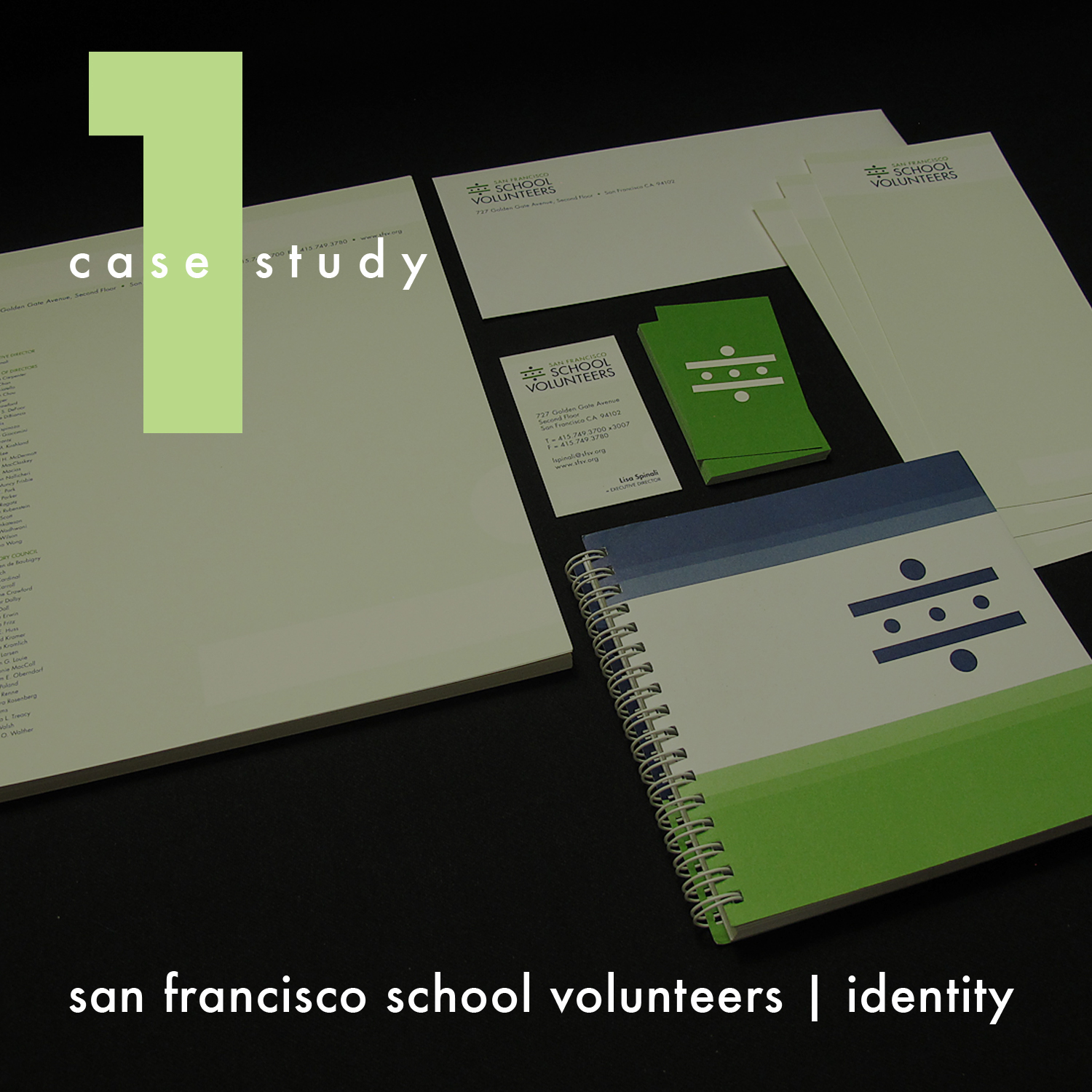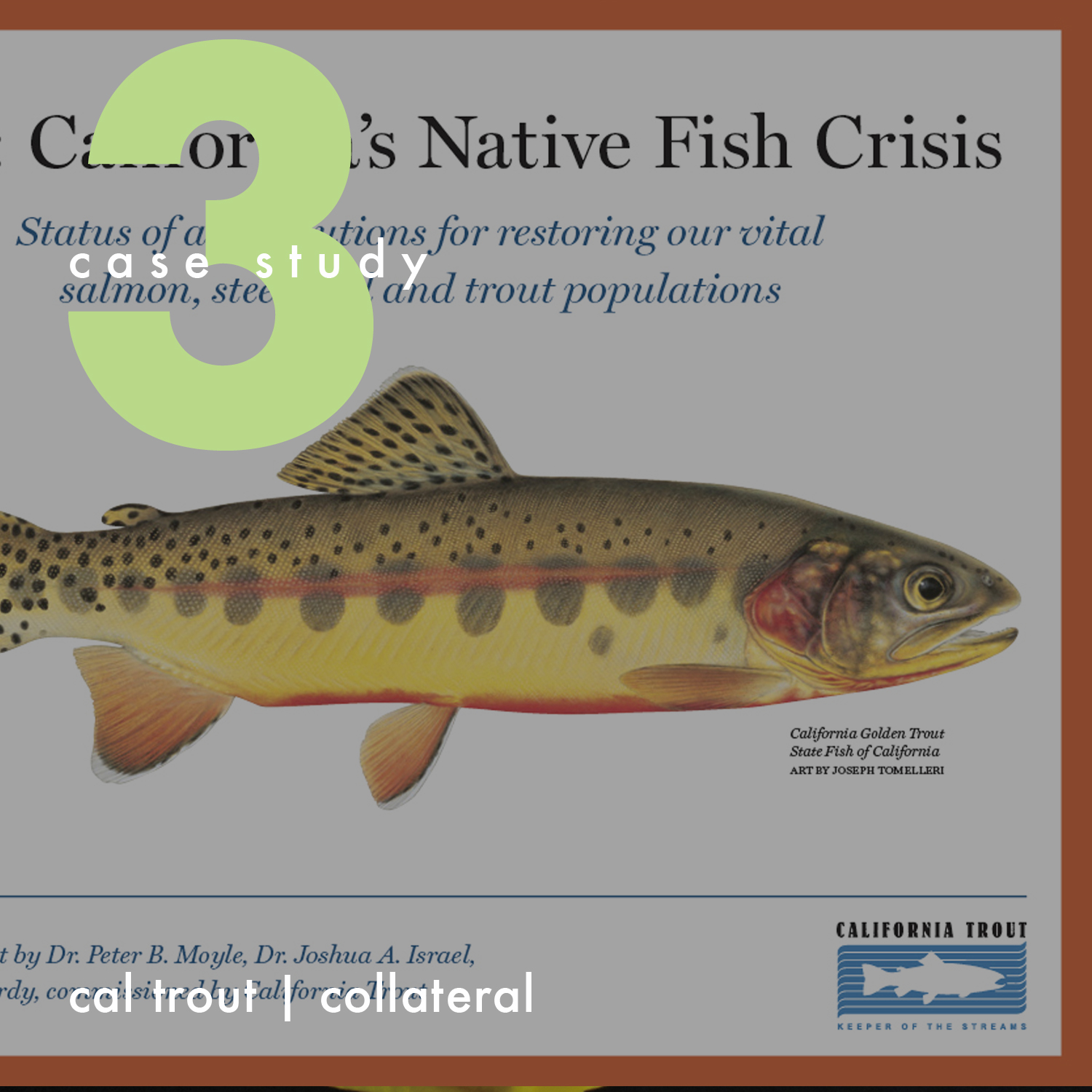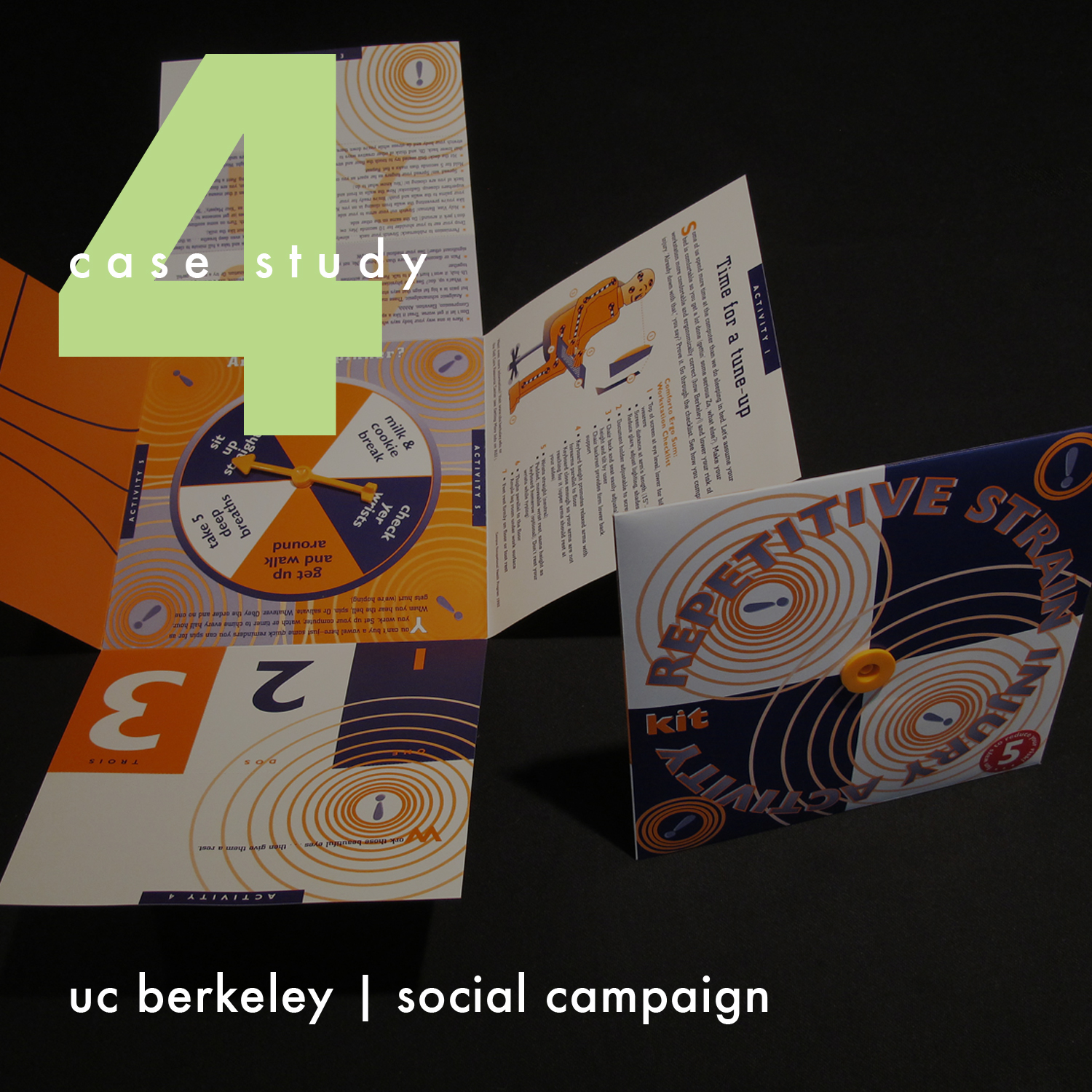> CASE STUDY 4 | SOCIAL CAMPAIGN
University Health Services, UC Berkeley
The university experience is ideally one that is an opportunity for growth—intellectually, physically, psychologically. The University Health Services at UC Berkeley supports this with direct services and programming to enhance mind, body, and soul.
PROBLEM: The Bureau of Labor Statistics reported that over half of all work injuries were related to repetitive strain injury (RSI). Carpal Tunnel Syndrome was a thing. Considering that computer usage among college students was no exception, there were no offerings to create awareness on this important health topic at the time. Suggesting behavioral change to 18–21 year olds was assumed to be difficult in some cases, especially when it concerned an activity that one does for extended amounts of time, and often done not very mindfully. Students were already tasked with learning new things in their chosen subjects and likely had little room for much else, so competition for attention was a challenge. The knowledge base for RSI was voluminous, often dry, and difficult to understand. How could we improve awareness on RSI and effectively minimize these injuries from happening in our student community?
SOLUTION: To go above and beyond a typical (and usually boring) brochure with unintelligible facts, our team arrived at an RSI Activity Kit. This project was produced thanks to a generous grant from the American College Health Association (ACHA). We envisioned this set of 5 different activities as a fun, lasting approach to making our experience at the computer better in terms of our health.
RESULTS: The cross-fold packet offered several opportunities for RSI awareness and prevention. Several binders of accumulated research and online resources were condensed down to the essentials. Language tone and messaging was set to casual, (National Lampoon?) with the assumption that by doing so it would feel more inviting, interesting, friendly. Usability studies were not extensive, though sufficient approval was gained from students and educators alike. Activity 1: set the stage with instructions on how to configure your station ergonomically. Activity 2: a silly way of taking a mental break, work on hand-eye coordination, and loosen up your wrist. Activity 3: various tips on the importance of down time, stretching, warning signs, when/how to get help. Activity 4: various cards to stick anywhere and decrease eye strain by changing your focal point from monitor distance. Activity 5: was inspired by my days as a board game developer, and the spinner switched up how you were clicking madly on your mouse and made you just do something else for a second. I cannot take responsibility for those who gained weight because they rigged the spinner to always land on “Milk & Cookie Break.”
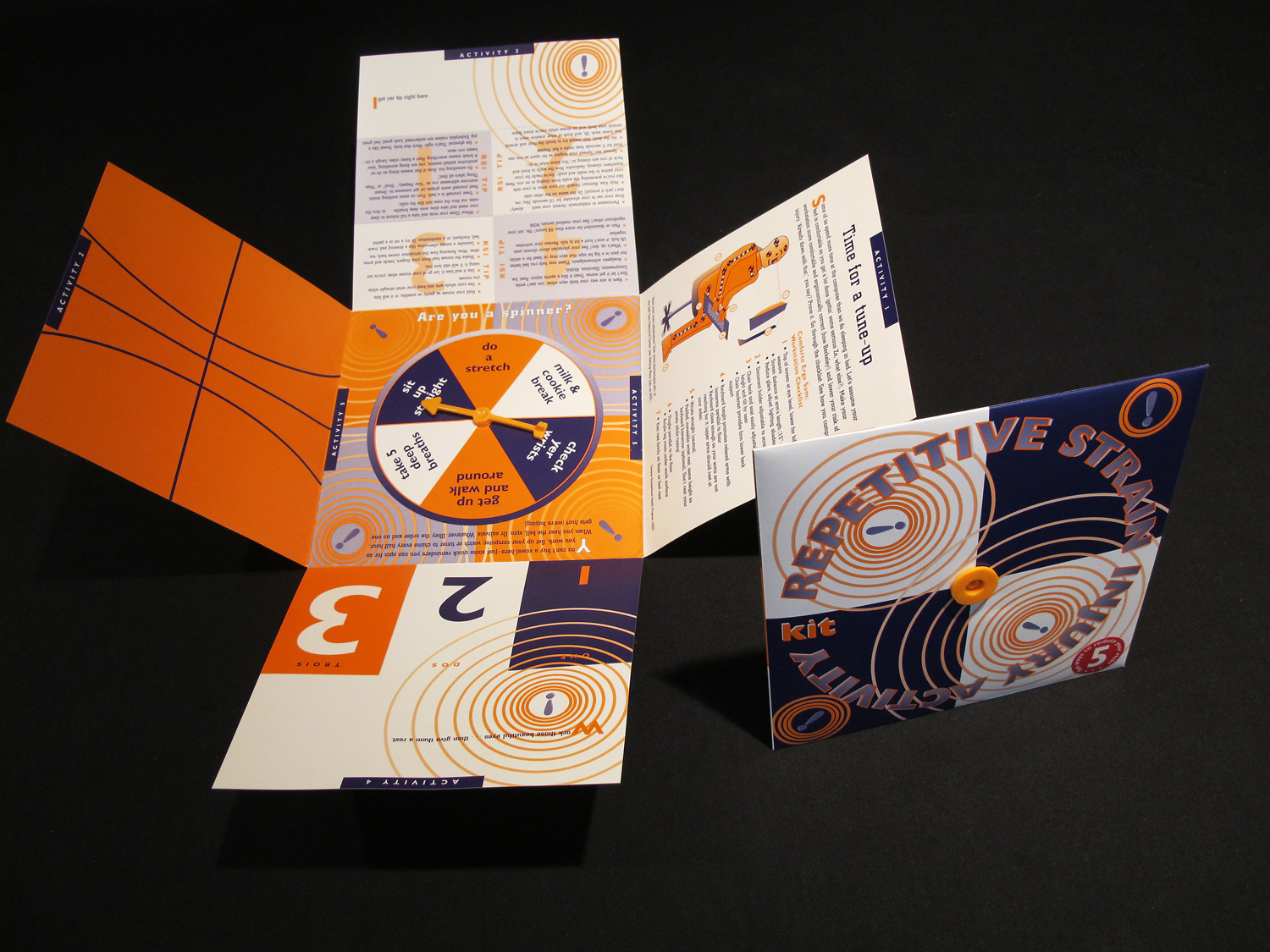
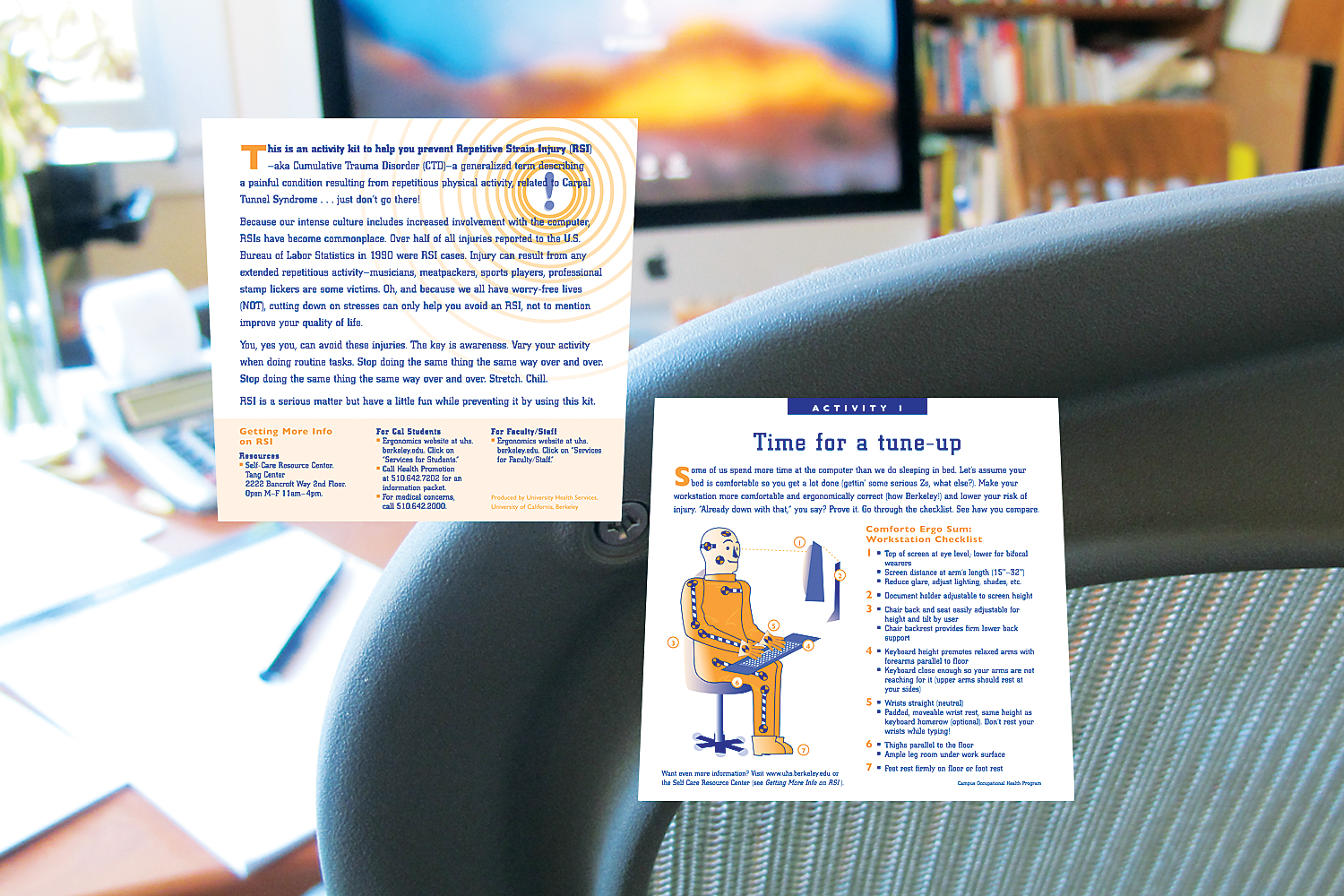
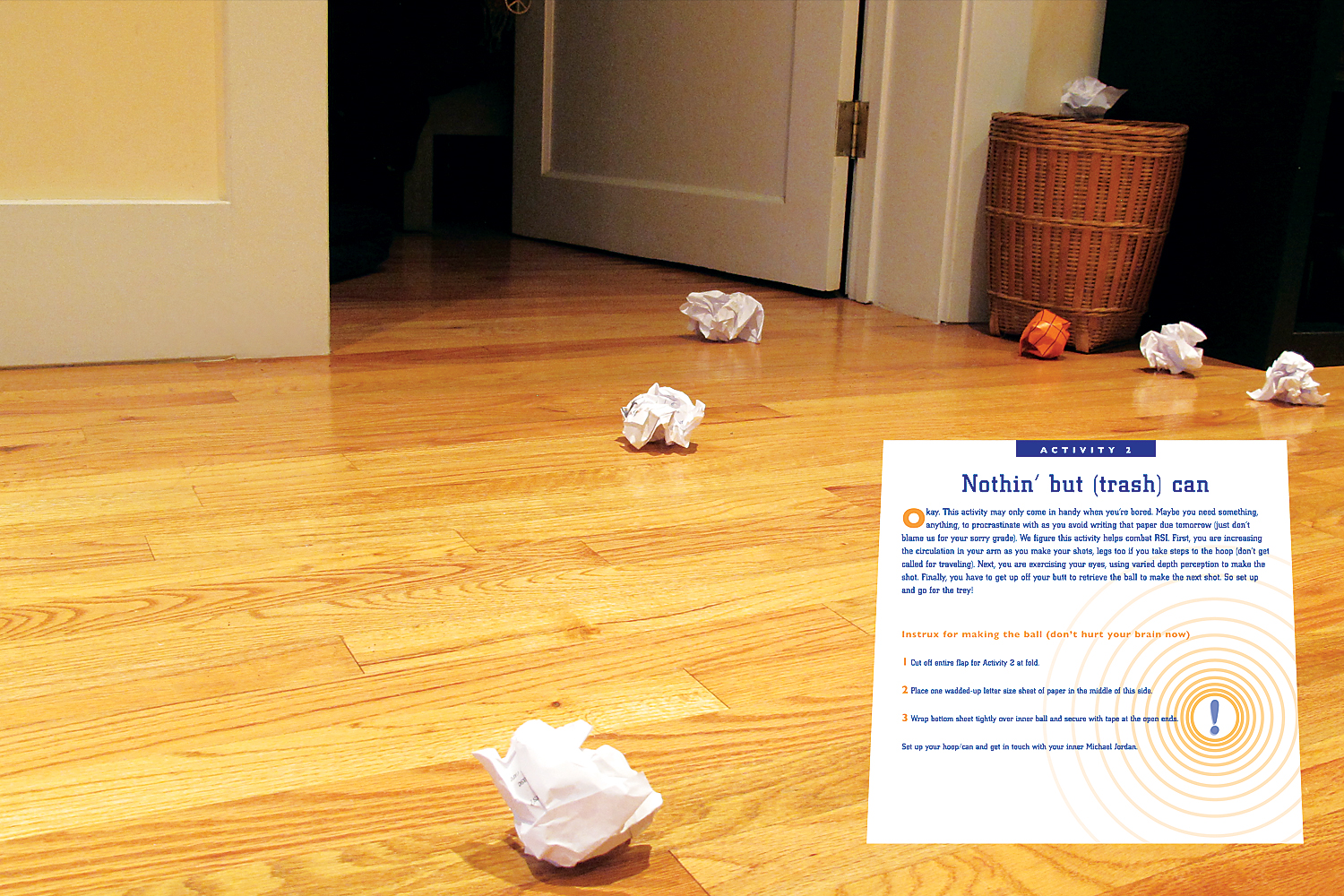
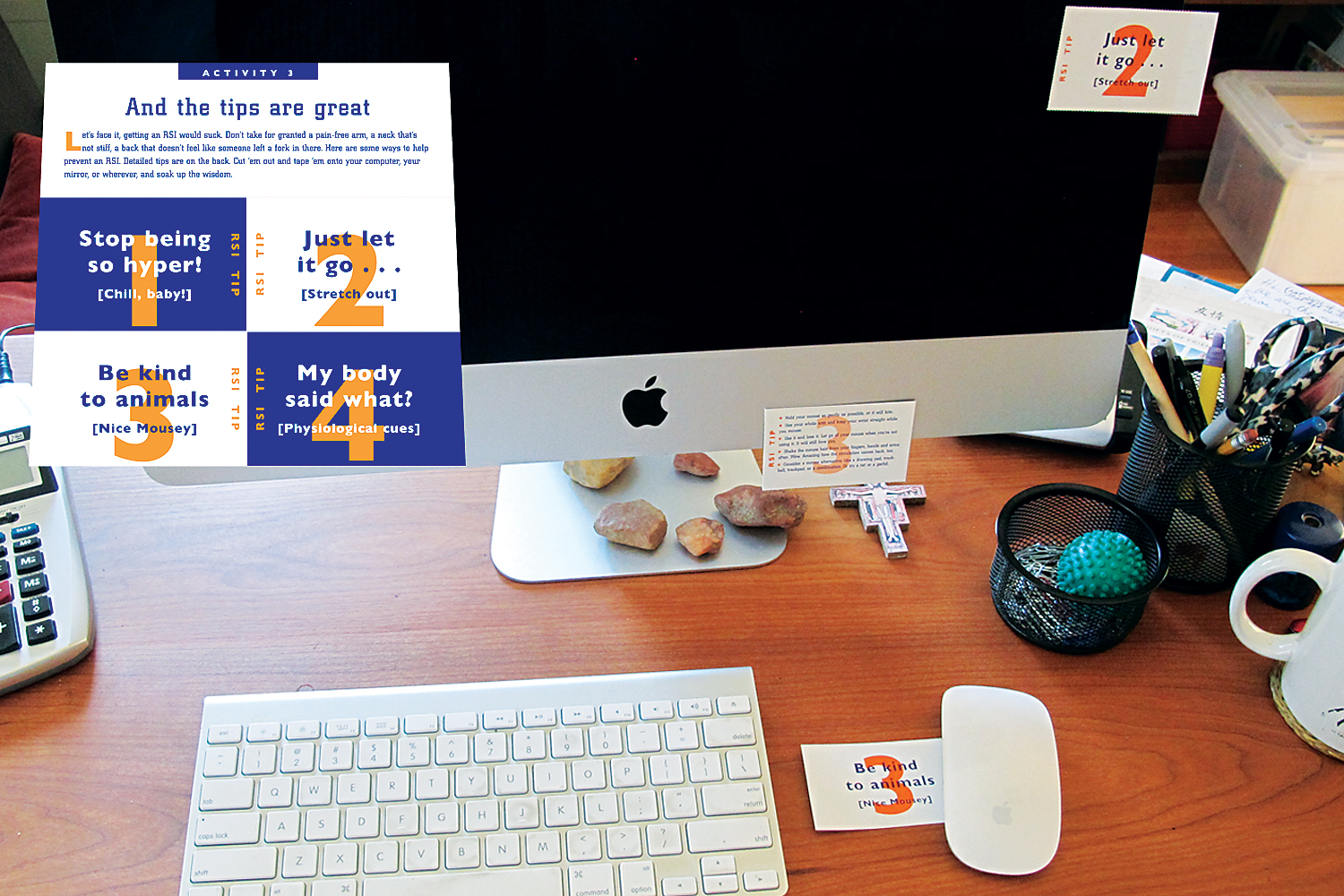

REFLECTION: It was important to deliver this content in a deliberately non-digital way—the goal being achievement of physical and mental pauses from the computer so as to prevent injury. As for impact, had resources been available for creation of baselines, a longitudinal study could have provided more insight on the effectiveness of the approach, and spur potential adjustments to the delivery and execution of the messages.
PERSONAL ROLE(S): art direction, illustration, project management, sourcing and vendor relations, print management


